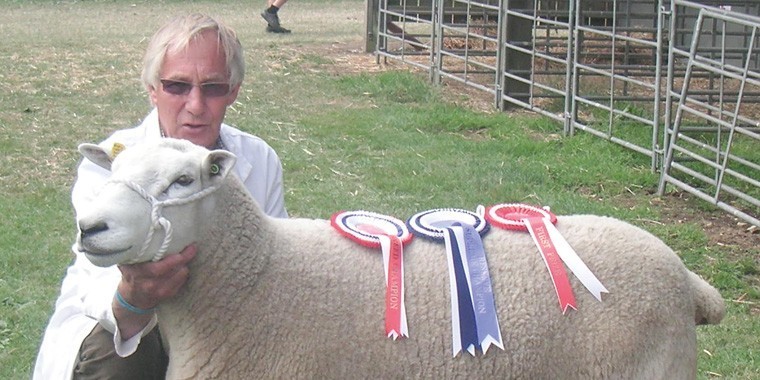Life really is serendipitous. In a chance conversation with Steven Spencer from the British Wool Marketing Board (BWMB) in Bradford – who judged the fleece competition at the South of England Show – I mentioned that, as part of my judging this season, I had been invited to judge at the Driffield Show, East Yorkshire.
“Why don’t you come and see us at the wool board headquarters in Bradford while you are in Yorkshire,” was the generous response. Anyway, come mid July I went to Driffield, which is a lovely one day show, supposedly the largest in the country, but still very much an agricultural show: if I had wanted to buy a hot tub, I would have been sadly disappointed. It is very well supported by the local farming community, which is probably why it has been able to sustain itself as a “proper” agricultural show.
After an overnight stop in the Dales, the good lady and I arrived at the BWMB headquarters the following morning, Steven, having been at the Sheep Event in Malvern the previous day, could not be there. But he had arranged with Ian Brooksbank, the board’s senior head grader, to host the visit and he kindly devoted a couple of hours of his time to provide us with a thoroughly interesting and informative guided tour of the facilities.
We left very much more aware of the effort committed by the board on behalf of producers and of some of the problems they face. We shall certainly look at our wool in a different light as a result of our visit. Lambing outside we have always selected for good wool and try to ensure that, at shearing, fleeces are kept clean and well presented: we can now really appreciate the benefits of that little bit of additional effort.
Many producers will complain about the price received for their wool, which is, in reality, dictated by the global market. But they really don’t help themselves. A significant number of the fleeces presented to the board (poorly wrapped, heavily contaminated with organic matter, packed wet, etc), have very little value. But the board is obliged to deal with them. In almost any other sector some of these would be regarded as waste, for which producers would be charged to dispose of appropriately.
The sheep sector could do a lot to help itself, often with little additional effort, both in terms of the way wool is presented to the board, but also in being more proactive in helping to develop new markets. Breeds and the varied environments in which sheep are kept will determine wool characteristics and not all wool can, in the conventional sense of the word, be good wool. But all wool has a market of some sort and it is simply a matter of finding and developing those markets. I would definitely recommend a visit to the wool board, given the opportunity, to any wool producer who cares about their wool.
The unusually high lamb prices earlier in the year have sadly long gone. Although such good prices were nice to have they were never going to be sustainable. There will always, for any product, be an equilibrium point where prices are such that demand will be equal to supply and sadly we went well beyond that point. As a result demand – and export demand in particular – tumbled. The French, faced a situation where UK import prices – normally in the region of 80 to 85% of domestic lamb prices – climbed in excess 100% of domestic lamb prices. As an inevitable consequence lamb UK imports fell by almost 30% as French buyers sought lamb from elsewhere with imports from Spain doubling. This does rather blow a huge hole in the assumption, in some quarters, that continental buyers will always want our lamb regardless of the Brexit outcome.
Recently prices have bounced back a bit to a sensible level where those doing the job right are still able make a workable margin. In spite of lamb prices falling back there seems to be a reasonable level of confidence in the sheep sector, with early store lamb sales attracting quite good prices. Admittedly, some of the larger store lamb finishers should have a bit of cash in their pockets after the early season’s trade. In addition some of the early breeding stock sales have returned good prices for good breeding females.
On the subject of doing the job right, this summer’s weather, has highlighted some of the advantages of using alternative forages to grass. After the wet spring I had some poached areas in need of a bit of tidying up, and these were sown with patching mix which included a little chicory. Where the grass has been baked dry, the chicory with its deep tap root has remained green all summer. It would have been nice to have a few hectares of chicory to carry the sheep through the summer. That said, in spite of only having what amounted to a standing hay crop in front of them for the past month and a half, my ewes look remarkably well. However, without a bit of creep feed, I suspect that the lambs would not have fared anywhere near as well.
To come back to wool, some of my ewes did not get sheared with the rest in late June. Once the weather really warmed up I was reluctant to remove their insulation from the scorching sun until it cooled a little. Interestingly, during the really hot weather, it was those ewes still carrying a full fleece that spent the most time out grazing, while the shorn ewes laid up for most of the day in the shade of the trees.




